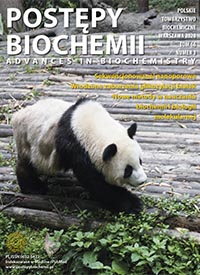Plastoglobules - Underestimated Components of the Plant Cell
DOI:
https://doi.org/10.18388/pb.2020_347Abstract
Plastoglobules (PGs), as important components of plastids, are involved in many stages of their development: from the chloroplast biogenesis through the chloroplast-chromoplast transformations, and finally in the process of gerontoplast formation. The unique protein and lipid composition of these structures, depending on their location, suggests that PGs are both a reservoir of spare materials and a center for many metabolic reactions. Plastoglobules play an active role in the metabolism of prenylquinones, carotenoids, and jasmonic acid, and are responsible for recycling of the thylakoid disintegration products. Their direct connection with the thylakoids allows for tight relationships between these two structures and redistribution of materials, which contributes to PGsâ role in response to stressful conditions. Moreover, strongly hydrophobic nature of plastoglobules, their specific proteome and a sufficiently simple isolation procedure create extraordinary possibilities of their application in plant biotechnology.
Downloads
Published
Issue
Section
License
Copyright (c) 2020 Advances in Biochemistry

This work is licensed under a Creative Commons Attribution 4.0 International License.
All journal contents are distributed under the Creative Commons Attribution-ShareAlike 4.0 International (CC BY-SA 4.0) license. Everybody may use the content following terms: Attribution — You must give appropriate credit, provide a link to the license, and indicate if changes were made, ShareAlike — If you remix, transform, or build upon the material, you must distribute your contributions under the same license as the original. There are no additional restrictions — You may not apply legal terms or technological measures that legally restrict others from doing anything the license permits.
Copyright for all published papers © stays with the authors.
Copyright for the journal: © Polish Biochemical Society.




